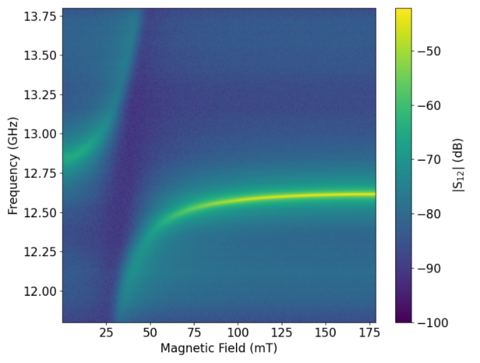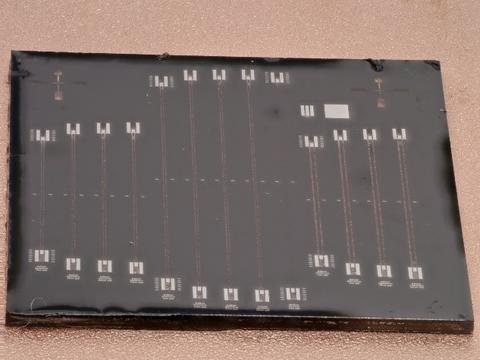Summary
The Hybrid Ferromagnetic-Superconductor Systems Project investigates how strong coupling between ferromagnetic devices and photons can be used to improve the sensitivity of measurements of the fundamental excitations in magnetic materials (magnons). These types of measurements may enable better understanding of novel magnetic materials, methods of magnetic manipulation such as spin torques, and other fundamental magnetic interactions. Additionally, we explore how the non-reciprocal nature of magnetism can be used to enable novel and more sensitive measurements of quantum systems and how magnetic elements can be used in support of those information systems.
Description

The main goal of the research program is to develop and understand the physics of systems in which a ferromagnet is strongly interacting with (i.e., coupled to) microwave and optical photons. When these measurements are performed using microfabricated resonators, they represent a novel metrology to help understand fundamental magnetic excitations but also have other potential applications. For instance, by combining strongly coupled ferromagnets to microwave photons that are also strongly coupled to a quantum bit (qubit), it is possible to detect single magnons, analogous to single photon detectors in optics. Additionally, ferromagnets can interact strongly with the microwave pulses in a coherent manner, allowing for the storage and routing of quantum information. Ferromagnets can also interact with much higher frequency (100 THz) optical light. Because magnetic systems can have strong interactions over such a large range of frequencies (gigahertz to terahertz) they can allow for the engineering of a hybrid ferromagnet-photon system such that the magnetic element strongly interacts simultaneously with both microwaves and optical light. This property can help to generate transduction of a qubit state from microwave to optical frequencies, which is expected to be important for future efforts in quantum computing and quantum networks. The program also is investigating designs for non-reciprocal ferromagnetic devices, which allow for the probing of quantum systems while providing isolation of the quantum system from external noise sources.
Publications
I. W. Haygood, M. R. Pufall, E. R. J. Edwards, Justin M. Shaw, and W. H. Rippard, “Strong coupling of Fe-Co alloy with ultralow damping to superconducting co-planar waveguide resonators,” https://arxiv.org/abs/2102.01129
Major Accomplishments

This is a relatively new pursuit of the Spin Electronics Group, with a significant effort having begun in 2020. The first major experimental focus has been investigating the miniaturization of magnon-photon devices operating at microwave frequencies, which have generally consisted of a millimeter-sized ferromagnetic located inside a resonant copper cavity, tens of millimeters in size. The fundamental idea is to reduce the sizes of these systems by using planar superconducting resonators, operating below 4 K, and ferromagnets that have been fabricated using optical and electron-beam lithography in NIST’s cleanroom. These two-dimensional devices are not only many orders of magnitude smaller that their three-dimensional counterparts, which have been used in many previous studies, but are also compatible with the fabrication techniques used to make many quantum circuits. In a recent paper we demonstrated record-setting coupling between an ultra-low-damping Fe-Co alloy (also developed at NIST) and a Nb coplanar waveguide resonator. Demonstration of large coupling is important because the coupling strength determines how quickly information can be converted from microwave photons to magnons in the ferromagnet. The coherence time of magnons in the ferromagnet are not as long as in other systems, so fast operation is necessary for practical devices. Our next steps are to further reduce the size of the resonators using electron-beam lithography to determine the detection limits of this measurement method. Also, we will explore how the magnetic elements can be manipulated at gigahertz rates to better understand the potential transduction mechanisms and optimize the sensitivity of the measurement technique. In addition, we will investigate if and how spin-torques can be used to introduce anti-damping forces, which would allow further increases in device performance.

